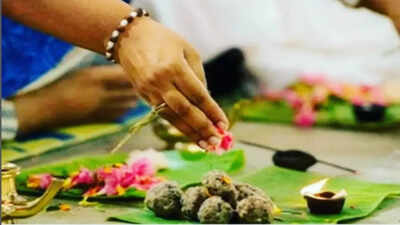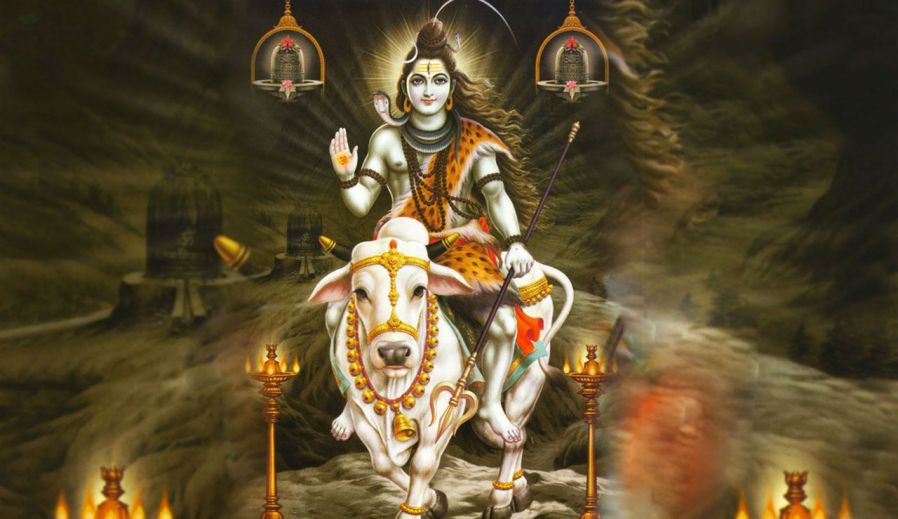
Maa Brahmacharini – The Goddess of Penance and Devotion
Blog
Maa Brahmacharini, worshipped on the second day of Navratri, symbolizes penance, devotion, and wisdom. She embodies patience, self-discipline, and unwavering faith, guiding devotees toward spiritual enlightenment and inner strength.
816
Shivam Gangwar
6 min
Mar 31, 2025
Maa Brahmacharini: The Goddess of Penance and Devotion
Navratri, the grand festival of Goddess Durga, is celebrated with great fervor across India. Each day of Navratri is dedicated to one of the nine forms of Durga, known as Navadurga. The second day of Navratri is dedicated to Maa Brahmacharini, the goddess of penance, devotion, and wisdom.
Who is Maa Brahmacharini?
Maa Brahmacharini is the second form of Goddess Durga and represents tapasya (penance) and unwavering devotion. The name Brahmacharini is derived from ‘Brahma,’ meaning supreme knowledge, and ‘Charini,’ meaning one who conducts or follows. She is an embodiment of immense patience, dedication, and self-discipline.
In her previous birth, Maa Brahmacharini was Devi Sati, the daughter of King Daksha. After sacrificing herself in the yajna fire due to her father’s insult to Lord Shiva, she was reborn as Parvati, the daughter of King Himavan. To marry Lord Shiva again, she undertook severe penance for thousands of years, surviving only on fruits, then leaves, and eventually on air and water. Her devotion and austerity earned her the name Brahmacharini, and she was finally blessed by Lord Shiva as his divine consort.

Iconography and Symbolism
Maa Brahmacharini is depicted as a divine goddess walking barefoot, symbolizing her intense penance. She wears a simple white sari, representing purity, and holds a japa mala (rosary) in her right hand and a kamandalu (water pot) in her left hand, signifying spiritual knowledge and renunciation. Her serene expression reflects peace, perseverance, and enlightenment.
Spiritual Significance of Worshipping Maa Brahmacharini
Maa Brahmacharini represents Sadhana (spiritual practice), self-control, and dedication. She governs the Swadhisthana Chakra (Sacral Chakra), which is associated with emotions, creativity, and inner strength. Devotees worship her to attain wisdom, patience, and the strength to overcome obstacles in their spiritual and personal lives.
Rituals and Puja Vidhi
On the second day of Navratri, devotees perform special rituals to seek the blessings of Maa Brahmacharini:
- Kalash Sthapana (Sacred Pot Installation) - The sacred pot is worshipped, symbolizing the divine energy of the Goddess.
- Offering Prayers and Mantras - Devotees chant mantras dedicated to Maa Brahmacharini while offering flowers, incense, and sweets:
“ॐ देवी ब्रह्मचारिण्यै नमः”
(Om Devi Brahmacharinyai Namah)
- Bhog (Prasad) Offering - As Maa Brahmacharini prefers a simple lifestyle, devotees offer sugar and fruits, which symbolize purity and simplicity.
- Fasting and Meditation - Many devotees observe a fast and meditate on her divine energy to gain self-discipline and spiritual strength.
Legend Associated with Maa Brahmacharini
The most significant legend related to Maa Brahmacharini is her severe penance to attain Lord Shiva as her husband. She renounced all worldly comforts and meditated for thousands of years. Her penance was so intense that even the gods in heaven were astonished. Finally, Lord Shiva, pleased with her devotion, accepted her as his divine consort. This story highlights the power of faith, patience, and perseverance in achieving one’s goals.
Astrological Significance
Maa Brahmacharini is associated with Mars (Mangal), the planet of determination, courage, and discipline. Worshipping her helps in overcoming challenges, boosting self-confidence, and strengthening willpower.
Benefits of Worshipping Maa Brahmacharini
- Increases patience, wisdom, and determination.
- Helps in achieving self-discipline and spiritual enlightenment.
- Strengthens mental focus and emotional stability.
- Brings peace, positivity, and prosperity.
- Reduces the negative effects of planet Mars (Mangal Dosh).
Conclusion
Maa Brahmacharini’s worship on the second day of Navratri teaches devotees the value of patience, perseverance, and devotion. She inspires us to stay dedicated to our goals and embrace challenges with grace and determination. Her divine blessings guide us toward wisdom, self-control, and a disciplined life.
May Maa Brahmacharini bless us all with strength, wisdom, and unwavering faith. Jai Mata Di!
मां ब्रह्मचारिणी: तपस्या और भक्ति की देवी
नवरात्रि, देवी दुर्गा का भव्य उत्सव, पूरे भारत में बड़े हर्षोल्लास के साथ मनाया जाता है। नवरात्रि के नौ दिनों में देवी दुर्गा के नौ स्वरूपों की पूजा की जाती है, जिन्हें नवदुर्गा कहा जाता है। नवरात्रि के दूसरे दिन मां ब्रह्मचारिणी की पूजा की जाती है, जो तपस्या, भक्ति और ज्ञान की देवी हैं।
मां ब्रह्मचारिणी कौन हैं?
मां ब्रह्मचारिणी देवी दुर्गा का दूसरा स्वरूप हैं और वे तपस्या (पेनेंस) और अटूट भक्ति का प्रतीक मानी जाती हैं। उनका नाम 'ब्रह्म' (परम ज्ञान) और 'चारिणी' (जो उसका अनुसरण करती हैं) से बना है। वे असीम धैर्य, समर्पण और आत्मसंयम की प्रतिमूर्ति हैं।
अपने पूर्व जन्म में, मां ब्रह्मचारिणी देवी सती थीं, जो राजा दक्ष की पुत्री थीं। जब राजा दक्ष ने भगवान शिव का अपमान किया, तो सती ने स्वयं को यज्ञ की अग्नि में भस्म कर लिया। इसके बाद, वे राजा हिमवान की पुत्री पार्वती के रूप में पुनर्जन्म लेती हैं और भगवान शिव को पुनः पति रूप में प्राप्त करने के लिए कठोर तपस्या करती हैं। हजारों वर्षों तक वे केवल फल, फिर पत्ते और अंत में वायु और जल के सहारे तपस्या करती हैं। उनकी कठिन साधना के कारण उन्हें ब्रह्मचारिणी कहा गया, और अंततः भगवान शिव ने उन्हें अपनी अर्धांगिनी के रूप में स्वीकार किया।
मां ब्रह्मचारिणी का स्वरूप और प्रतीकात्मकता
मां ब्रह्मचारिणी को नंगे पैर चलते हुए दिखाया जाता है, जो उनकी कठोर तपस्या का प्रतीक है। वे सफेद वस्त्र धारण किए हुए हैं, जो पवित्रता को दर्शाता है। उनके दाहिने हाथ में जप माला और बाएं हाथ में कमंडल होता है, जो आध्यात्मिक ज्ञान और त्याग का प्रतीक है। उनका शांत और दिव्य स्वरूप धैर्य, संयम और आध्यात्मिक ज्ञान का प्रतीक है।
मां ब्रह्मचारिणी की पूजा का आध्यात्मिक महत्व
मां ब्रह्मचारिणी साधना, आत्मसंयम और समर्पण की देवी हैं। वे स्वाधिष्ठान चक्र (Sacral Chakra) की अधिष्ठात्री देवी मानी जाती हैं, जो भावनाओं, सृजनात्मकता और आंतरिक शक्ति से जुड़ा हुआ है। उनकी पूजा से व्यक्ति को आत्मनियंत्रण, धैर्य और कठिनाइयों से लड़ने की शक्ति प्राप्त होती है।
पूजा विधि और अनुष्ठान
नवरात्रि के दूसरे दिन, मां ब्रह्मचारिणी की पूजा विशेष विधि से की जाती है:
- कलश स्थापना (घट स्थापना) - देवी की दिव्य उपस्थिति को दर्शाने के लिए कलश की स्थापना की जाती है।
- मंत्र जाप और प्रार्थना - भक्त मां ब्रह्मचारिणी को फूल, धूप और मिठाई अर्पित करते हैं और निम्नलिखित मंत्र का जाप करते हैं:
“ॐ देवी ब्रह्मचारिण्यै नमः”
(Om Devi Brahmacharinyai Namah)
- भोग अर्पण - मां ब्रह्मचारिणी को चीनी और फल अर्पित किए जाते हैं, जो पवित्रता और सरलता के प्रतीक हैं।
- व्रत और ध्यान - कई भक्त उपवास रखते हैं और मां ब्रह्मचारिणी की कृपा पाने के लिए ध्यान करते हैं।
मां ब्रह्मचारिणी से जुड़ी पौराणिक कथा
मां ब्रह्मचारिणी की सबसे प्रसिद्ध कथा उनकी कठोर तपस्या के माध्यम से भगवान शिव को प्राप्त करने की है। उन्होंने राजसी सुखों को त्यागकर हजारों वर्षों तक कठिन तपस्या की। उनकी तपस्या इतनी कठोर थी कि स्वर्ग के देवता भी चकित हो गए। अंततः भगवान शिव उनकी भक्ति से प्रसन्न हुए और उन्हें अपनी अर्धांगिनी के रूप में स्वीकार किया। यह कथा धैर्य, विश्वास और समर्पण के महत्व को दर्शाती है।
ज्योतिषीय महत्व
मां ब्रह्मचारिणी का संबंध मंगल ग्रह (Mars) से है, जो साहस, दृढ़ निश्चय और अनुशासन का कारक है। उनकी पूजा करने से जीवन की कठिनाइयों को दूर करने, आत्मविश्वास बढ़ाने और इच्छाशक्ति मजबूत करने में मदद मिलती है।
मां ब्रह्मचारिणी की आराधना के लाभ
- धैर्य, ज्ञान और संकल्प शक्ति बढ़ती है।
- आत्मसंयम और आध्यात्मिक प्रगति में सहायता मिलती है।
- मानसिक संतुलन और भावनात्मक स्थिरता मिलती है।
- शांति, सकारात्मकता और समृद्धि आती है।
- मंगल ग्रह के नकारात्मक प्रभाव कम होते हैं।
निष्कर्ष
मां ब्रह्मचारिणी की पूजा नवरात्रि के दूसरे दिन हमें धैर्य, तपस्या और समर्पण का महत्व सिखाती है। वे हमें अपने लक्ष्य के प्रति समर्पित रहने और हर परिस्थिति में धैर्य बनाए रखने की प्रेरणा देती हैं। उनकी कृपा से हमें आध्यात्मिक जागरूकता, आत्मनियंत्रण और एक अनुशासित जीवन की प्राप्ति होती है।
मां ब्रह्मचारिणी की कृपा से हम सभी को शक्ति, ज्ञान और अटूट विश्वास मिले। जय माता दी!





